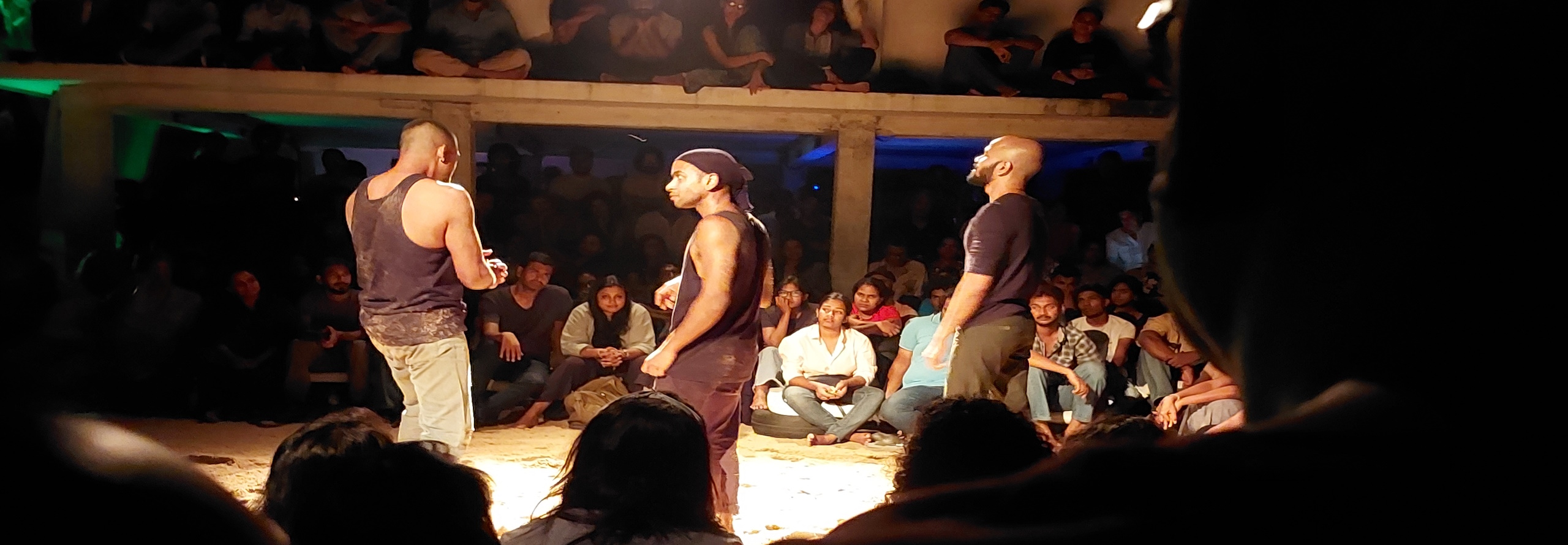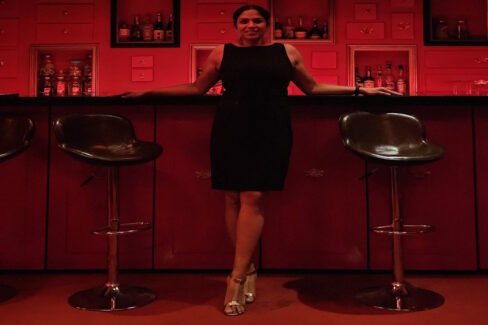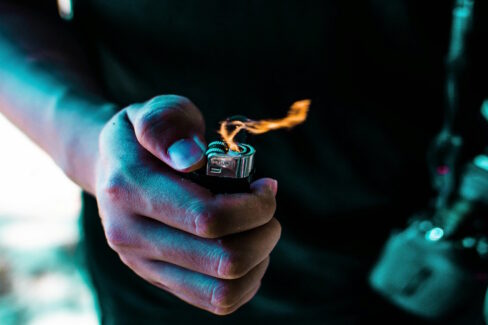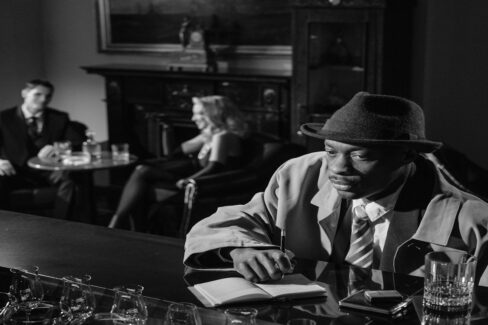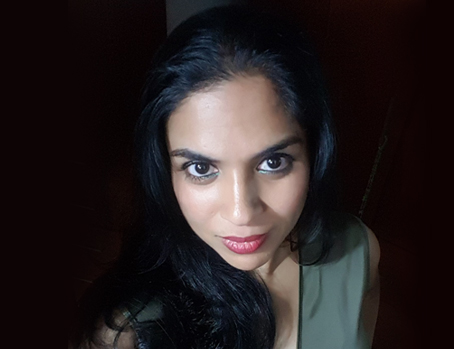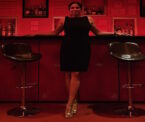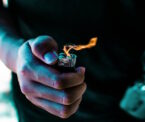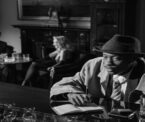The Spaces in Between The Size
Kumbukgahaduwa – Sunday evening. A path that veers off the Parliament drive into a tree lined street of dark bends and a candlelit trail. At the end of the trail was the sign ‘Love Art Love’ suspended above with twigs and wound wire. Somewhat rustic and almost eerie.
After milling around with a hodge podge of people – some had spilled over from the Galle Lit Fest and others looked like they had come from a typical Sri Lankan campus savari – I went to my seat. The stage was a circular sand floor that one of the actors kept sweeping with a plastic rake and the audience was seated around them, some above and some standing in the trees. It was surreal because it was a metaphoric window into the lives of people who live in this world. The tickets were painted leaves based on how much each paid – Supporter, Chillin and Adventurous. I was Chillin clearly at Rs. 3000 but my choice was based on the location of the seat.
It was a good mingling of Prada & Bata as it were. The Batas comfortably seated on the floor and the Pradas trying not to look too awkward as they wedged themselves somewhere. There was no traditional seating and allocated seats. You fitted in where there was space.
Everyone was here for a play – The Brothers Size by Tarrel Alvin McCraney – Sinhala version directed by Prasanna Mahagamage. The title was a bit baffling till you realised that Size was a name. The whole location was rustic – very street theatre, campus amphitheatre like. I knew this vibe – some did not. Many were fascinated and a bit uncomfortable. This was the space that straddled between Colombo and the Hinterland in every sense of the word – starting from the main actor of the play – Hiran Abeysekera.
I first saw Hiran as the child in Peter Shaffer’s Equus on the British School Auditorium stage – whipping himself as he went through his fascination of horses which included worshipping some horse related gadgets which he called ‘chinkle chankle’. He was amazing then and he still is which is what won him a place at RADA, lead role in The Life of Pi and most recently an Olivier. Yet Hiran’s acceptance speech at the Olivier in the midst of the Aragalaya harked back to where he truly felt at home – Sri Lanka. His training was in Sinhala theatre which to date supersedes English theatre by miles. The acting and the depth of theatre still bears testament to this.
And so Hiran attracted his own and now with his international fame, the beauties of Colombo, who are quite happy to live in a bubble till the international world recognises what they fail to – the potential of their own people.
The Brothers Size is an American play about two brothers – Ogun and Oshoosi – and Oshoosi’s friend from prison – Elegba. It highlights Southern American and very black themes like brotherhood which transcends blood and where siblings play the role of parents in the absence of mothers and fathers. The physical imprisonment of Oshoosi is mirrored in the psychological imprisonment of Ogun who saw in himself the role of protector to his brother. Elegba adds the dimension of distraction and substitution – he is the brother to Oshoosi when Ogun could not be there. And these bonds interweave between the law, truth and a realistic understanding of what life is for those who walk off the beaten path. The reference to Oshoosi’s Christian adherence in the face of Ogun’s rebellion as a child and how as adults, these roles switch almost in that Oshoosi becomes the convicted and Ogun the conformist.
The acting by Hiran as Oshoosi, Danushka Dias as Ogun and Chamara Gamaathige as Elegba, was intense, tight and riveting. The scenes were almost seamless and somewhat casual with stage directions recited before each scene and a good dose of Sinhala swear words that were used as normally as people who swear use them. It was almost like we were witnessing a real life clip from behind an invisible screen. What was also interesting was the use of the term ‘nigger’. Considered derogatory and insulting except when used by those who are called that term, it is one of those words that Sri Lankans have got used to thanks to hip hop culture and blind cultural appropriation. It reminded me of Trevor Noah’s book ‘Born a Crime’ where he explains how he knew people named Hitler because in South Africa, you just gave names you heard from the West without really understanding what they denoted.
The names of the characters are African though set in the US but almost a recall to the slaves who were brought to the US and hence a call back to their roots. Tina Turner’s Proud Mary was featured and it reminded me of how she was an abused woman who walked away with nothing and somehow made it big – it sort of ties in with the ending of the play. The opening scene had the actors calling out the name God and I heard in it, the Sri Lankan hyper correction ‘goad’ which was a lovely juxtaposition of the spaces in between.
The play had slow motion scenes with a sort of ultra violet light in between to explain tensions, emotions and the passing of time. The role of dreams that were almost like premonitions is again something most Sri Lankans can relate to and brothers protecting brothers in our aiya-malli culture is very familiar. The wants of Oshoosi even after being in prison – a car – is something most can identify with. To date, a car is seen as a sign of prosperity and upward social mobility. It is a tool to impress as much as it is a vehicle to destinations. The final scene where Ogun gives Oshoosi the car and a chance to leave and go see Mexico – setting him free not just in body but in mind as well, is a moment of great relief as much as it is a moment of sadness. It was like watching a parent telling their child to go make what they can of their life.
At the end of the play, the organisers shared how they had been working on this translation for almost 8 or 10 years and that finally it came to fruition in December and again in January this year. The location with its rustic setting was designed and built by the team. It was very Sri Lankan where you had each supporting the other – the money they earned helped them immensely but even if they did not get paid, they would have still done it for the love of what they do – for Art is Love and it begets Art.
We were told there’s plain tea and roti and there was going to be a music and jam session afterwards. I happily sipped on the plain tea which reminded me of the two rupee plain tea I drank at campus, and chomped on the roti as we wended our way out of the candlelit trail, into a car and back home.

